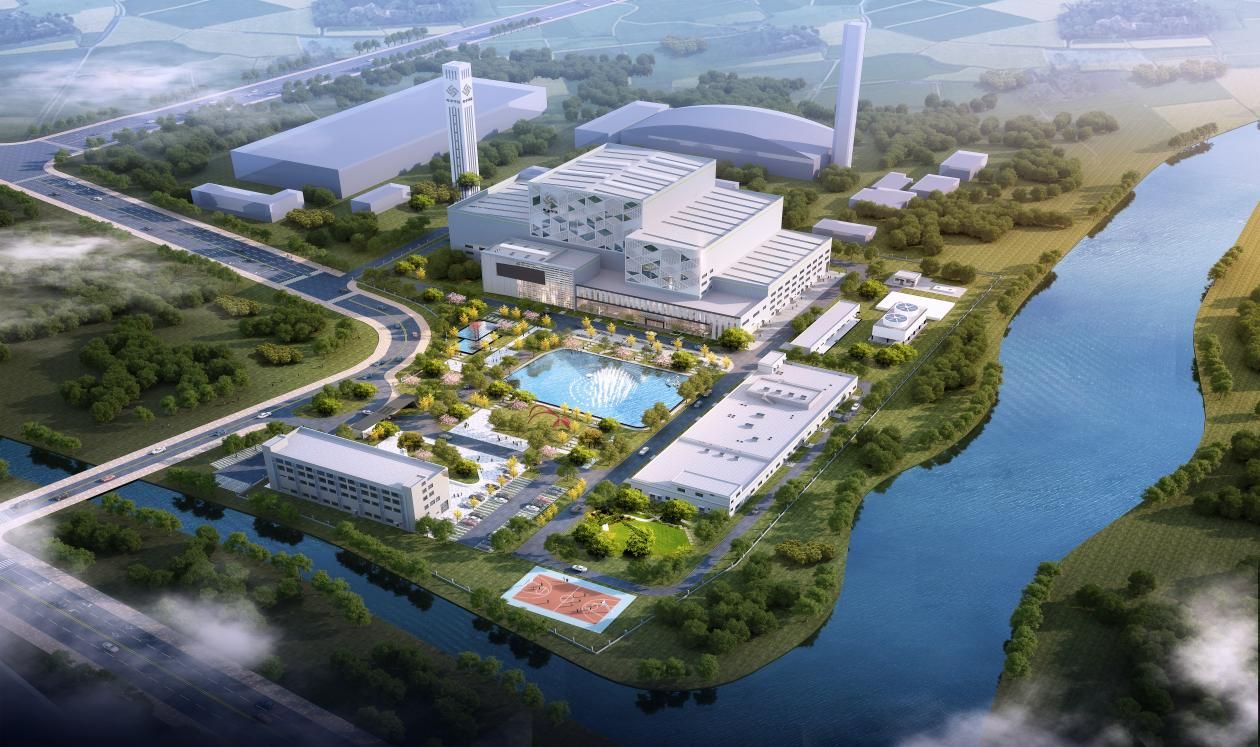On July 6, 2022, the construction unit affiliated to Hesheng Group undertook the construction of the PPP project – the main structure of the second phase expansion project of Taizhou domestic waste incineration power generation was successfully capped. It has been completed and delivered for application, and is independently supported by Hesheng Group Co., Ltd. We have supplied some products and equipment, including the cable trays that we mainly promote to overseas.
Taizhou Domestic Waste Incineration Power Generation Phase II Expansion PPP Project is an important livelihood project jointly invested by Municipal Urban Investment Group and Guangdong Yuefeng Kewei Environmental Protection Company. The project is located in the Taizhou Provincial Modern Agricultural Comprehensive Development Demonstration Zone, covering an area of nearly 180 acres, with a total investment of over 700 million yuan.
This project is mainly responsible for the treatment of domestic waste that needs to be deployed in and around Taizhou City. It will adopt domestic and foreign advanced mechanical grate furnace waste incineration treatment technology. It is expected that the annual processing capacity will exceed 300,000 tons and the annual power generation will be 130 million kilowatt hours. Nearly 40,000 tons of standard coal will be saved every year. A supporting construction of 400,000 cubic meters of fly ash (emergency) landfill, of which 320,000 cubic meters will be used for landfilling of fly ash after chelation treatment from urban waste incineration power plants, and 80,000 cubic meters will be used for domestic waste in Taizhou City emergency response.
After the project is completed, it will make full use of garbage, a “misplaced resource”, to incinerate and generate electricity, reduce resource waste, promote energy conservation and emission reduction, realize “turning waste into treasure”, greatly improve the efficiency of urban and rural garbage treatment, and improve the living environment of residents.
In the next step, the project will carry out equipment installation, operation and commissioning to ensure that it is put into use on schedule, achieve reduction, resource utilization and harmlessness of waste treatment, and help improve the ecological environment level of Taizhou.
Project Standard for the Installation of Cable Supporting System
1.1 Cable tray products should be tested and certified by the national bridge professional quality agency;
1.2 The structure of pallets, ladders, brackets and hangers should meet the requirements for strength, stiffness and stability;
1.3 After the cable is laid, the deflection of the bridge should not be greater than 1/200 of the span of the bridge;
1.4 When the bridge is installed horizontally, its direct plate connection should not be placed at 1/2 of the span or at the support point;
1.5 The cantilever section that appears during bridge installation should generally not exceed 1000mm;
1.6 The filling rate of power cables in the bridge should not be greater than 40%, and the filling rate of control cables should not be greater than 20%, and a development margin of 10% to 25% must be reserved;
1.7 When the cable is laid horizontally in the bridge, it should be fixed every 2m, and when it is laid vertically, it should be fixed every 1.5m;.
1.8 The supports and hangers of the bridge are generally one every 2m for horizontal laying and one every 1.5m for vertical laying;
1.9 The bridges penetrate the partition walls. The holes in the floor slabs should be tightly sealed with non-combustible materials. The fireproof sealing materials should be halogen-free, non-corrosive to cables, smoke-tight, air-tight and have 30-year long-term fire resistance. .And the fireproof blocking solution should facilitate later cable replacement and expansion;
1.10 Grounding of cable trays:
1.10.1 Cable trays, their supports and hangers, and incoming or outgoing metal cable casings must be protectively grounded and must meet the following requirements:
a. The total length of the metal cable tray and its brackets should be connected to the grounding trunk line at no less than 2 places;
b. Both ends of the connecting plate between non-galvanized cable trays are connected to the ground wire, and the minimum allowable cross-sectional area of the ground wire is not less than 4mm;
c. The two ends of the connecting plate between galvanized cable trays are not connected to the ground wire, but there are no less than 2 connection fixing bolts with lock nuts or lock washers at both ends of the connecting plate;
1.10.2 Use the bridge system as the grounding trunk line, and clean the insulating coating of the connecting plates on both ends of each section of the bridge. The measured connection resistance should not be greater than 0.00033Ω. For details, see the National Building Standard Design Atlas “Cable Tray Installation” 04D701 -3 P87.
1.10.3 When the cable tray is introduced into and out of the building, it should be connected to the indoor grounding trunk line or outdoor grounding device of the building;
1.11 If the bridge conflicts with process pipes or air ducts during installation, its position and height can be adjusted accordingly on site according to the actual situation;
1.12 Telescopic joints should be installed on straight-line steel cable trays whose length exceeds 30m. A compensation margin of 20~30mm should be left at the deformation joints of the cable
Post time: Nov-23-2023



